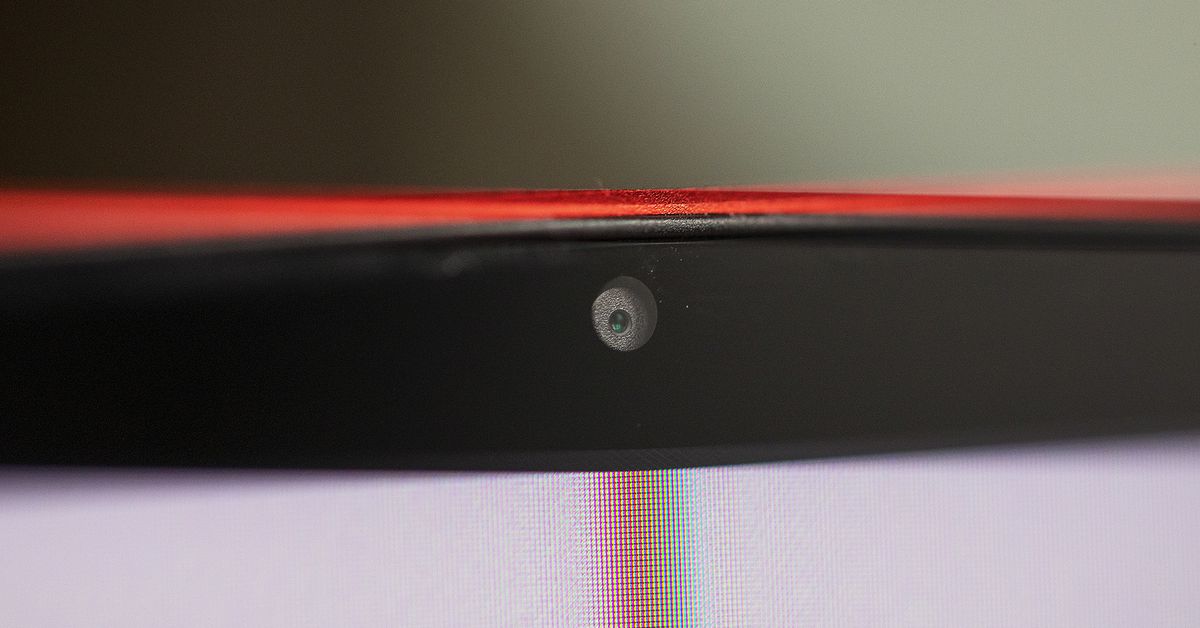I reviewed two impressive Copilot+ PCs, but one was clearly better
The HP OmniBook X and Lenovo Yoga Slim 7x are the first two Copilot+ laptops we've reviewed. They're similar, but not identical, and one is clearly better.

 The Lenovo Yoga Slim 7x Mark Coppock / Digital Trends
The Lenovo Yoga Slim 7x Mark Coppock / Digital TrendsA new era of Windows laptops is just now rolling out. Microsoft’s Copilot+ PC category defines machines with fast Neural Processing Units (NPUs) that speed up on-device AI features, and the designation is currently exclusive to Windows on Arm laptops running on the Qualcomm Snapdragon X chipset.
The first two Copilot+ laptops we’ve reviewed are the HP OmniBook X and the Lenovo Yoga Slim 7x. They’re similar in that they use the same Snapdragon X Elite, but they also differ in their designs. Which one is right for you?
Specs and configurations
| HP OmniBook X | Lenovo Yoga Slim 7x | |
| Dimensions | 12.32 inches x 8.8 inches x 0.56-0.57 inches | 12.79 inches x 8.86 inches x 0.51 inches |
| Weight | 2.97 pounds | 2.82 pounds |
| Processor | Qualcomm Snapdragon X Elite X1E-78-100 | Qualcomm Snapdragon X Elite X1E-78-100 |
| Graphics | Qualcomm Dreno | Qualcom Adreno |
| RAM | 16GB | 16GB 32GB |
| Display | 14.0-inch 16:10 2.2K (2240 x 1400) IPS | 14.5-inch 16:10 3K (2944 x 11840) IPS |
| Storage | 512GB 1TB |
512GB 1TB |
| Touch | Yes | Yes |
| Ports | 1 x USB-A 3.2 1 x USB-C 3.2 1 x USB4 3.5mm audio jack |
3 x USB4 |
| Wireless | Wi-Fi 6E and Bluetooth 5.3 Wi-Fi 7 and Bluetooth 5.4 |
Wi-Fi 7 and Bluetooth 5.4 |
| Webcam | 5MP with infrared camera for Windows 11 Hello facial recognition | 1080p with infrared camera for Windows 11 Hello facial recognition |
| Operating system | Windows 11 on Arm | Windows 11 on ARM |
| Battery | 59 watt-hour | 70 watt-hour |
| Price | $1,150+ | $1,199+ |
| Rating | 3.5 out of 5 stars | 4 out of 5 stars |
The OmniBook X has two models, both built around the Snapdragon X Elite X1E-78-100 chipset and a 14-inch 2.2K IPS display. With 16GB of RAM and a 512GB SSD, it costs $1,150. For $100 more, you can upgrade to a 1TB SSD.
The Yoga Slim 7x also has just two configurations, using the same Qualcomm chipset and a 14.5-inch 3K OLED display. For $1,199, you get 16GB of RAM and a 1TB SSD, and for $1,313 you get 32GB of RAM and a 2TB SSD.
Both of these laptops are closer to the midrange than premium segments today and are reasonably affordable given the performance, battery life, and build quality. The Lenovo is a lot more attractive, though, as its OLED display gives it a huge advantage.
Design
 HP OmniBook X Mark Coppock / Digital Trends
HP OmniBook X Mark Coppock / Digital TrendsWhile the highlights for each laptop are Copilot+, Windows on Arm, and the Snapdragon X Elite chipset, each needs to be evaluated as a laptop as well. Here, they’re closely matched,
Both are built well, with solid all-aluminum chassis and lids. The OmniBook X might be slightly more rigid, especially when some firm pressure is applied to the lid, but that’s a quibble. Some other laptops that cost more are more solid all around, but these are still premium-level builds.
The Yoga Slim 7x is thinner and lighter than the OmniBook X, and it’s slightly wider. However, it also has a larger display with thinner bezels. Overall, the Lenovo felt closer to the laptop that both of the machines are chasing: the MacBook Air 13, which is the thinnest laptop around. That’s true in terms of aesthetics as well, as the Yoga Slim 7x lookss more modern and premium to me. The OmniBook X is an attractive laptop tool, though. I wouldn’t choose between them based on looks alone.
Both laptops have great keyboards, with the HP sporting deeper and firmer switches and larger keycaps with slightly more generous spacing. The Lenovo keyboard has sculpted keycaps and lighter switches. It’s down to preference as to which is better. Both have mechanical touchpads that are just OK. Neither compete strongly with the MacBook Air’s larger Force Touch haptic touchpad.
Connectivity favors the Yoga Slim 7x if you prefer more modern ports and the OmniBook X if you like a legacy connection or two. HP kept the 3.5mm audio jack while Lenovo dropped it, which will be a concern for some people. Neither laptop has an SD card reader. Wireless connectivity is equally as modern, although Wi-Fi 7 is the default on the Yoga and optional on the OmniBook X.
Finally, the OmniBook X has a higher-res 5MP webcam compared to the Yoga Slim 7x’s 1080p version. Both support the Microsoft Studio effects software that’s enhanced by Copilot+ and can leverage the Qualcomm chipset’s fast NPU. And both support all of the other available Copilot+ AI features. That’s a draw.
Performance
 Mark Coppock / Digital Trends
Mark Coppock / Digital TrendsBoth laptops use the new Qualcomm Snapdragon X Elite, an Arm chipset with 12 cores (eight performance and four efficient). More specifically, it’s the X1E-78-100 variant that runs at up to 3.4GHz (compared to the fastest at 3.8GHz) and does not have a dual-core boost. The Adreno integrated graphics run at up to 3.8 TFLOPS (compared to 4.6 TFLOPS). Both also have fans, which spun up during testing, but were reasonably quiet.
The Yoga Slim 7x was slightly faster than the OmniBook X in our benchmarks. These results are a bit faster than Intel’s Meteor Lake chipset in CPU-intensive tasks and roughly equal to Intel’s Intel Arc integrated graphics in GPU-intensive tasks. They’re faster than the Apple M3 chipset’s CPU cores, but not as fast as its GPU cores.
Overall, this makes both the Yoga Slim 7x and OmniBook X very fast productivity laptops, but not so great for gaming or creative tasks that require a fast GPU.
| Geekbench 6 (single/multi) |
Cinebench R24 (single/multi/battery) |
3DMark Wild Life Extreme |
|
| HP OmniBook X (SnapDragon X Elite X1E-78-100) |
2,377 / 13,490 | 106 / 872 / 794 | 5,754 |
| Lenovo Yoga Slim 7x (SnapDragon X Elite X1E-78-100) |
2,454 / 14,039 | 106 / 872 / 867 | 6,067 |
Portability
 Mark Coppock / Digital Trends
Mark Coppock / Digital TrendsThe OmniBook X has a 54 watt-hour battery and a 2.2K IPS display, while the Yoga Slim 7x has a larger 70 watt-hour battery, but also a more power-hungry 3K OLED display. So, it’s not surprising that the HP saw better battery life in our web and video battery tests. Both lasted longer than Intel Meteor Lake laptops, but not as long as the MacBook Air M3.
We also tested the laptops in sustained highly demanding tasks by running the Cinebench 2024 benchmark while on battery. Both achieved close to 100% of the performance when plugged in. The Dell XPS 13 OLED ran for 1.5 hours in the same test on performance mode (and close to 100% performance) while the Yoga Slim 7x maintained its full performance on battery and lasted for 3.5 hours.
The bottom line is that when compared to the previous generations of Windows laptops, both the OmniBook X and the Yoga Slim 7x are in a different class of efficiency. When compared to the MacBook Air M3, however, neither lasts as long. And if you want the absolute longest battery life, then the OmniBook X benefits from its lower-power display.
| Web | Video | Cinebench 2024 |
|
| HP OmniBook X (SnapDragon X Elite X1E-78-100) |
13 hours, 37 minutes | 22 hours, 4 minutes | 1 hour, 52 minutes |
| Lenovo Yoga Slim 7x (SnapDragon X Elite X1E-78-100) |
12 hours, 5 minutes | 17 hours, 3 minutes | 1 hour, 52 minutes |
Display and audio
 Mark Coppock / Digital Trends
Mark Coppock / Digital TrendsIf battery life is your primary concern, then the OmniBook X wins out. But if you want a spectacular display with brilliant colors and inky blacks, then the Yoga Slim 7x has a distinct advantage. It’s also brighter and sharper and has a faster 90Hz refresh rate compared to 60Hz.
According to my colorimeter, the OmniBook X has a good IPS display. But, the Yoga Slim 7x’s OLED panel is superior in every metric. Everyone will like it a lot better, be they productivity users, creators, or media consumers.
| HP OmniBook X (IPS) |
Lenovo Yoga Slim 7x (OLED) |
|
| Brightness (nits) |
325 | 489 |
| AdobeRGB gamut | 78% | 100% |
| sRGB gamut | 100% | 96% |
| DCI-P3 gamut | 79% | 100% |
| Accuracy (DeltaE, lower is better) |
0.98 | 0.67 |
The Yoga Slim 7x’s four-speaker audio, with two upward-firing tweeters and two side-firing woofers, is also much better than the OmniBook X’s two downward-firing speakers. There’s more volume, more bass, and everything’s clearer for a better overall audio experience. You’ll be more likely to grab for a pair of headphones with the HP.
The Yoga Slim 7x is the better of these two next-gen Windows laptops
The OmniBook X is a good laptop for the price. It’s fast, gets great battery life, and its build quality is good. But the Yoga Slim 7x is slightly faster, equally well built, and its OLED display is in another class entirely.
You’ll get better battery life with the HP, but the overall experience will be a lot better with the Lenovo. Overall, the Yoga Slim 7x is both a better laptop and a better value.

 Troov
Troov 































